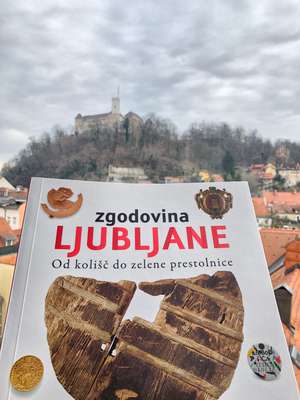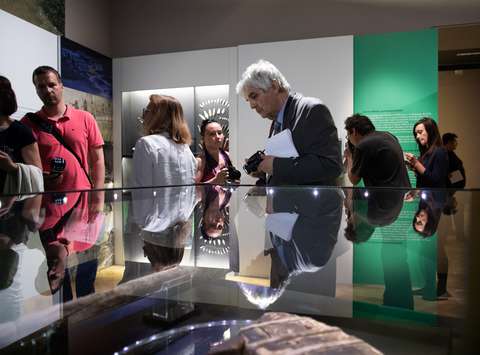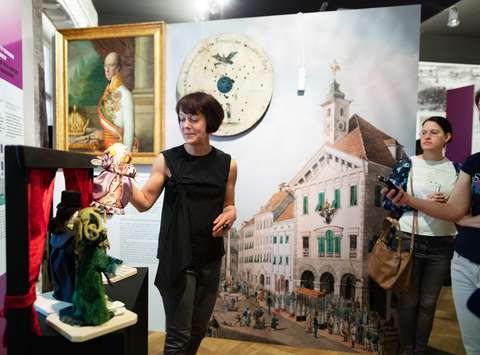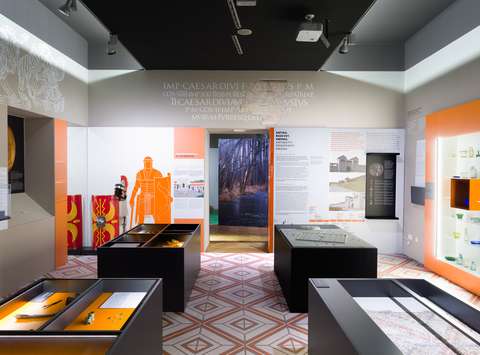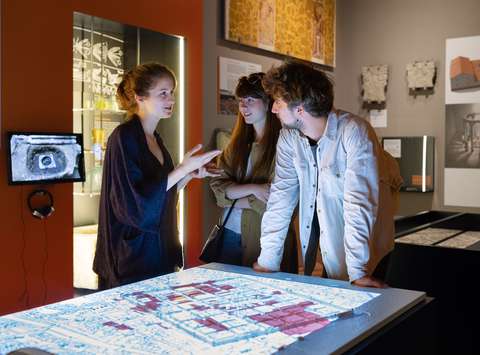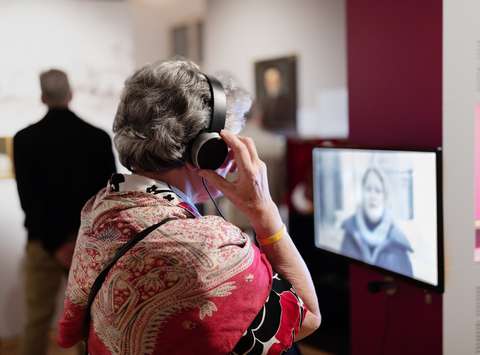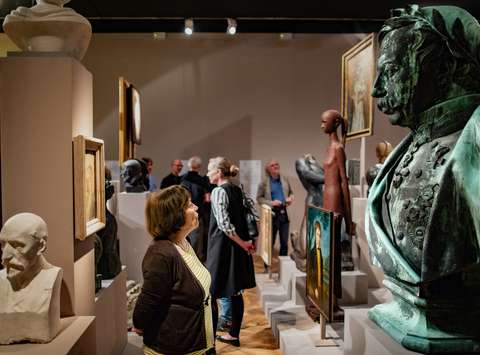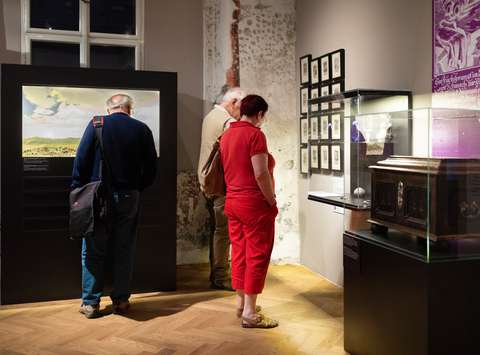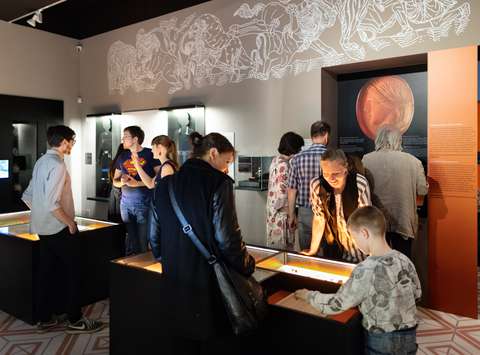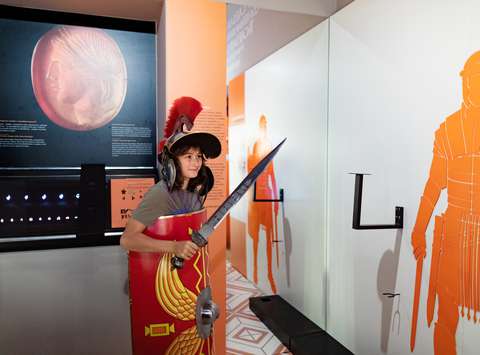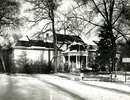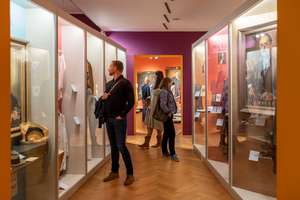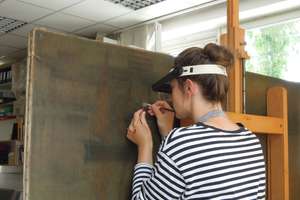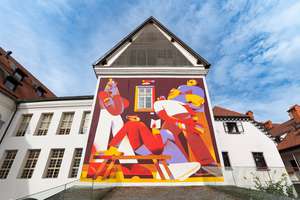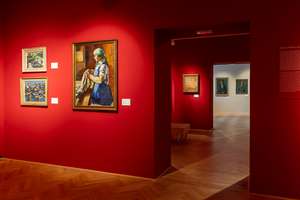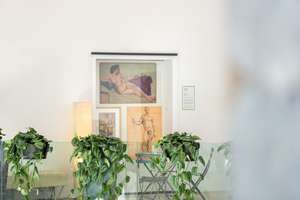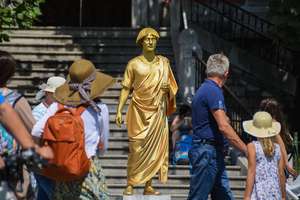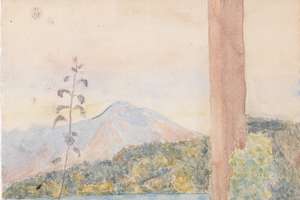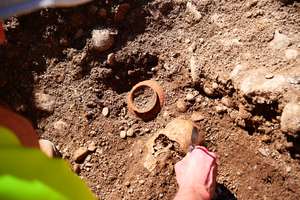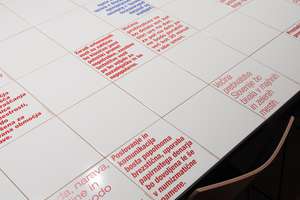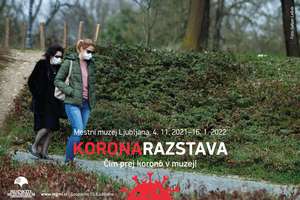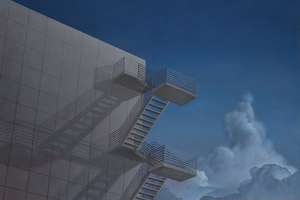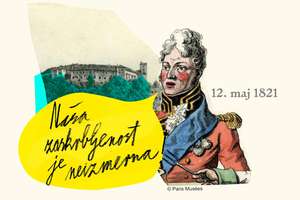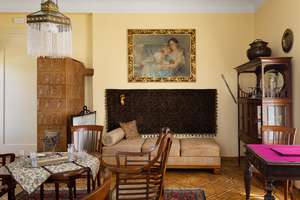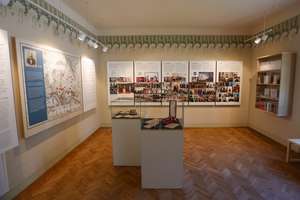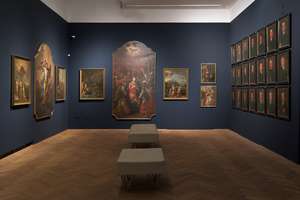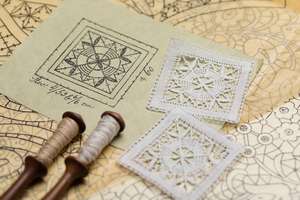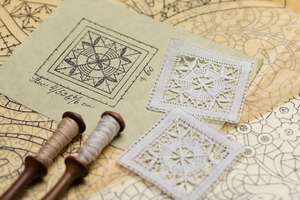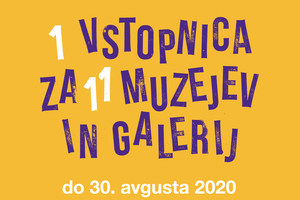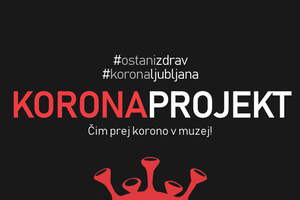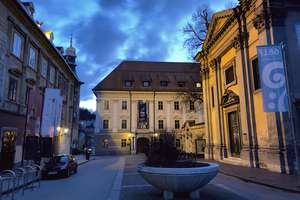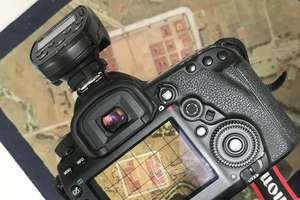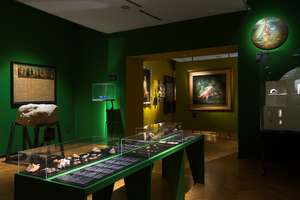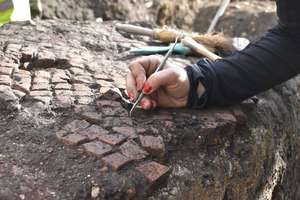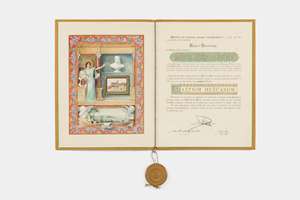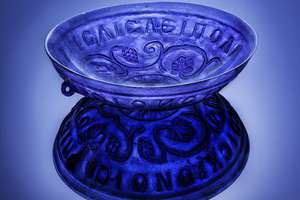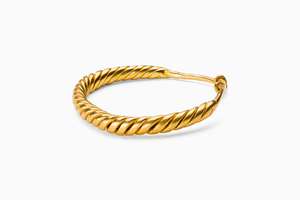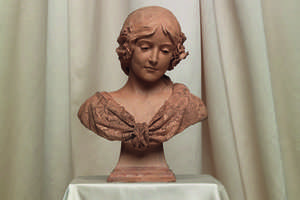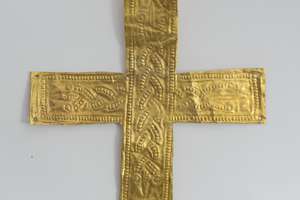Ljubljana. History. City.
Discover the Spirit of the City!
How well do you know the rich history of Slovenian capital? Pile-dwellers, Emona, Middle and New Ages, the 20th and 21st centuries… what is the history of Ljubljana? Get to know Ljubljana's past - see the chronological presentation of Ljubljana’s millennia of heritage with precious authentic artefacts, like the world's oldest wooden wheel with an axle!
Learn about the history of our capital city, its important geostrategic position at a crossroads of routes, and of the extraordinary events that unfolded here from prehistory to the 20th century. Alongside crucial points in time, emperors, kings and presidents, the exhibition also presents you the everyday life of the city’s population, which also left its mark on Ljubljana.
PREHISTORY: HOW WAS LIFE ON THE MARSHES?
In the beginning, there was nature, with all of its laws, resources, and whims. Despite a colder climate, about 40,000 years ago Neanderthals would occasionally inhabit the area of today’s Ljubljana, where they would also utilise wooden points for foraging, hunting and gathering food. 35,000 years had to pass for people to finally permanently settle in the area. They lived in stilt houses, which rose above the marshy landscape. Maybe the belief that the citizens of Ljubljana should be called “froggers” has really old roots! The famous wooden wheel with an axle, about 5,200 years old, is also from the pile dwelling period. This discovery placed Ljubljana on the world map of the oldest and most important innovations. Later, people settled closer to the centre of today’s Ljubljana. The people that travelled through this space, or settled here permanently, received different names from history: Veneti, Illyrians, Celts. Everything then changed once the Romans arrived here …
ANTIQUITY: FLOURISHING OF ROMAN EMONA
When the reign of Augustus was coming to its end, his troops helped construct Emona. Why here exactly? It was due to the important strategic location, on a crossroads of important trade routes in the narrow Ljubljana Gates, the lowest natural passage between the Alps and the Dinarides, in a time when Romans were conquering new lands in the Balkan south and the Pannonian east. The Roman colony of Emona formed next to a navigable river and it was due to this fact that the city remained relevant in later periods. This was a proper Roman town, with roads, sewers, public buildings, walls, and a lively everyday life. Its streets were filled with merchants trading wonderful glassware, craftsmen carved headstones, children played with marbles on sidewalks, brides wore golden engagement rings, while travellers wore phallic amulets for luck. The city had a long life, but not an eternal one. With the fall of the Western Roman Empire, life in Emona also declined.
MIDDLE AGES: LJUBLJANA OF MERCHANTS, GUILDS AND BURGHERS
After the fall of the Western Roman Empire, it was Slavs that came knocking on the Ljubljana Gates and settled on the edges of the Ljubljana Basin. It was only at the dawn of the second millennium that circumstances were finally ripe for the development of medieval Ljubljana. Its beginning is a story of success: the recent discovery of a wooden plate positions its origin in the early 11th century. A good hundred years later, the medieval city of Leibach, or Luwigana, is first mentioned in written records. Almost overnight, in slightly over a century, Ljubljana expanded from a small hut settlement under the Castle Hill to the river’s left bank and became a true medieval town with imposing walls that withstood a Turkish siege in the early 15th century. The importance of the town is documented in the fact that Ljubljana had its own mint and, since opportunity makes a thief, it also had its money forgers.
MODERN HISTORY: CITY OF CULTURE AND NATIONAL IDEAS
The proliferation of the city during the proverbial Dark Ages continued in the modern era when Ljubljana began developing into a centre of trade, craftsmanship, culture and national identity. The 16th century was crucial, as the Reformation brought us first books written in Slovene. Following the “fiery” Counter-Reformation was a period of peaceful city life in the 17th and 18th centuries, when Ljubljana received its Baroque change of clothes. The city nobility was busy rearranging their city homes into monumental Baroque palaces – among which was also the one hosting our museum – the Auersperg Palace. The bourgeoisie indulged in new opulent facades for their houses.
National identity was influenced by the brief episode of French supremacy, during Napoleon’s conquering of Europe, when Ljubljana became the capital of the Illyrian Provinces and Slovenian was now the officially used language. The romantic in us could say that it was love which, a few years later, most influenced the rise of the level of the Slovenian language. The love that the poet France Prešeren, author of the text for the Slovenian anthem, felt for his young muse Julija.
The first half of the 19th century once again transformed Ljubljana’s image, which was even further altered by a severe earthquake in 1895. Following this disastrous event, Ljubljana stepped into the new century fully renovated due to the resourcefulness of its mayor Ivan Hribar, who was very successful in acquiring funds for the renovation.
20th CENTURY: FROM WAR TO WAR, FROM STATE TO STATE
The 20th century was turbulent for the entire world, and Ljubljana was no exception. With the conclusion of the World War I, during which Ljubljana was an important city in the hinterlands of the Isonzo Front, the 600 years of Habsburg rule of Slovenian lands also came to its end. In the period between the two wars, Ljubljana experienced a lively city life, the stock exchange began operating, the University of Ljubljana was established, as were the Academy of Sciences and Arts and the Ljubljana Grand Fair. At the same time, it was Jože Plečnik who impressed his carefully considered architecture on the period and the city, which is making Ljubljana a unique city to this day. The World War II inflicted much pain on the city and encircled Ljubljana in barbed wire. With the liberation, the state also entered a new political, social and economic paradigm – socialist Yugoslavia. Quick urbanisation marked the period, Ljubljana grew exponentially, and migration increased the city’s population. Following several decades of Yugoslavia (with Marshall Tito also passing away in 1980 at the University Medical Centre Ljubljana), Slovenians decided to form an independent state on a plebiscite in 1990. Independence was declared on 25 June 1991, and for the first time Ljubljana became the capital of an independent Slovenia.
As we have begun about 40,000 years ago, we continue today: with nature. After millennia of settlements in the area, Ljubljana has preserved a strong contact with nature, as green areas reach deep into the centre of what is today a contemporary European city.
Artefacts, images, and texts, condensed into ten chapters, bring to life the history of Ljubljana, from the prehistoric first settlement to the development of a modern capital and contemporary city.
Colophon
Museum and Galleries of Ljubljana, City Museum of Ljubljana
Represented by: Blaž Peršin
Project manager: Tamara Bregar
Content manager: Bernarda Županek
Creators of the exhibition: Mojca Ferle, Martin Horvat, Sašo Kalan, Damijan Kracina,
Katarina Toman Kracina, Blaž Peršin, Ana Porok, Ana Pokrajac Iskra, Janez Polajnar, Barbara Savenc,
Blaž Vurnik, Irena Žmuc, Bernarda Županek
Texts by: Matija Črešnar (Univerza v Ljubljani, Filozofska fakulteta, Oddelek za arheologijo in Zavod za varstvo kulturne dediščine Slovenije, Center za preventivno arheologijo), Mojca Ferle, Primož Gašperič (Geografski inštitut Antona Melika ZRC SAZU), Martin Horvat, Urša Karer, Dimitrij Mlekuž (Univerza v Ljubljani, Filozofska fakulteta, Oddelek za arheologijo in Zavod za varstvo kulturne dediščine Slovenije, Center za preventivno arheologijo), Ana Pokrajac Iskra, Janez Polajnar, Blaž Peršin, Ana Porok, Barbara Savenc, Matija Zorn (Geografski inštitut Antona Melika ZRC SAZU), Blaž Vurnik, Irena Žmuc, Bernarda Županek
Exhibition and graphic design: Metka Dariš, Tomaž Perme
Text editing: Ines Drame, Maja Kovač
Language editing (SLO): Maja Kovač, Katja Paladin
Translation into English: Nataša Gerželj, Milan Stepanovič (Studio Phi, d. o. o.),
Matic Šavli
Language editing (ENG): Terry T. Jackson
Items exhibited: Mestni muzej Ljubljana, MGML / City Museum of Ljubljana, MGML,
Narodni muzej Slovenije, Arhej, d. o. o.
Conservation and restauration of the materials: Maja Banović, Benton, d. o. o., Matjaž Bizjak, Alenka Drol, Janja Gojkovič, Vesna Ivkič, Katarina Toman Kracina, Restavratorstvo Zupan, Bojana Zavodnik, Mojca Zver
Documentation: Karmen Brecelj, Gorazd Knific, Matej Satler
Photographs by: Arhej, d. o. o., Inštitut za arheologijo, ZRC SAZU, Grega Babič, David Badovinac, Dokumentacija MGML, Branko Čeak, KPLB, Janez Kos, Tomaž Lauko (Narodni muzej Slovenije), Matija Lukić, Metropolitanska knjižnica Zagrebške nadškofije, Matevž Paternoster, Andrej Peunik, Davorin Tome, Damijan Vahen
Paintings, illustrations, drawings and infographics: Ajda Fortuna, Nuša Jurjevič, Janja Gojkovič, Valentin Gorenčič, Katarina Toman Kracina, Dragica Knific Lunder, Tomaž Perme, Igor Rehar, Nina Urh, Mojca Zver
Cartographic material and plans: Geografski inštitut Antona Melika ZRC SAZU (Rok Ciglič, Mauro Hrvatin, Jure Tičar, Matija Zorn, Primož Gašperič), Ministrstvo za okolje in prostor – Agencija RS za okolje, Gašper Rutar, Zavod za varstvo kulturne dediščine Slovenije – Center za preventivno arheologijo, Andrej Gaspari, Irena Šinkovec, Zgodovinski arhiv Ljubljana
Copies and replicas: Katarina Toman Kracina, Tomo Per (RogLab), RPS, d. o. o.
Production: Damijan Kracina, Jože Kovačič, Špela Saje, RPS, d. o. o., Tehnična služba MGML: Miha Kreč, Gašper Marc, Mitja Marc, Zvone Sečnik, Jernej Volk, Simon Zgonec, Tomaž Žnidarčič
Production of exhibition equipment: RPS, d. o. o.
Video content and video production: David Badovinac, Maja Bahar, Matjaž Bizjak, Klara Cvar, Nina Grčar, Martin Horvat, Jakob Hreščak, Simon Intihar, Diana Junčaj, Katja Kajba, Romana Kunej, Borut Kuster, Maja Kovač, Tamara Leskovar (Oddelek za arheologijo, Filozofska fakulteta Univerze v Ljubljani), Boštjan Napotnik, Matevž Paternoster, Petra Peunik Okorn, Greta Pflaum, Manca Pugelj, Radiotelevizija Slovenija, Igor Rehar, Skupina STIK, Irena Šinkovec, Katarina Toman Kracina, Mojca Zver, Tim Žibrat, Irena Žmuc, Bernarda Županek
Audio guide: Matic Šavli
Hands-on activities: Akademska folklorna skupina France Marolt, Iztok Bobić, Matej Bojanec, Nika Damjanovič, Maruša Ferjančič, Nataša Gerželj, Boštjan Gorenc - Pižama, Aleksander Hribovšek, Lado Jakša, Vladimir Janc, Zoran Srdić Janežič, Nuša Jurjevič, Larisa Kazić, Urša Kikelj, Knjižnica slepih in slabovidnih Minke Skaberne, Tjaša Konovšek, Matej Koren, Katarina Toman Kracina, Nina Lah, Miha Lavrinec, Bojan Lazarevič (Agora Proars), Ema Marinčič, Mizarstvo Ročka, O.K.vir, Ivanka Pašalić, Tomo Per, Maja Peterlin, Petra Peunik Okorn, Janja Rebolj, Derek Snyder, Šivalnica Anamarija, Anja Tomažič, Tomi Trilar (posnetki zvokov iz narave, Slovenski arhiv živalskih zvokov, Prirodoslovni muzej Slovenije), Stanislav Zdešar (Lambda), Barba Štembergar Zupan
Accessibility & audio guide and adjustments for the blind and visually impaired: Ustvarjalna pisarna SOdelujem, Katrin Modic, Karmen Bajec, Ema Marinčič
Promotion: Tamara Bregar, Janja Buzečan, Urša Karer, Maja Kovač
Adults and children's programmes: Nika Damjanovič, Maruša Ferjančič, Ema Marinčič, Petra Peunik Okorn, Janja Rebolj
Location
Gosposka 15
1000 Ljubljana
Information and reservations:
T: +386 1 2412 500
T: +386 1 2412 506
E- mail: info@mgml.si, prijava@mgml.si
Opening hours
Tuesday–Sunday: 10.00–18.00
Mondays, 1 January, 1 November and 25 December: Closed
Tickets
Adults: € 8,00
Reduced*: 6,00 €
Family: 18,00 €
Free: ICOM, PRESS, SMD, URBANA tourist card holders, disabled persons, licensed tourist guide
We recommend buying a combo ticket for the Ljubljana City Museum and the Emona Archaeopark:
Adults: 10,00 €
Reduced: 8,00 €
Family: 22,00 €
Public guided tour
Adults: 9,00 €
Reduced*: € 7,00
Family: 18,00 €
Guided tour on a selected date (book your appointment at prijava@mgml.si)
Group of up to 7 persons: 70,00€
Group of up to 7 persons, discounted*: 55,00 €
Group of 8 or more persons: 9,00 €/adults, 7,00 €/reduced*
* seniors over 60, students, children and young people under 19, unemployed, disabled
Press kit
News
The five-member jury of the Open Call Turn into the Wall consulted the 136 proposals submitted to the international call for proposals for a mural and announced the German street artist Krashkid from Hamburg as the winner.
Visiting the Museum is even more accessible.
Second Symposium on the Exhibiting of Art, Architecture, and Design, and Exhibition Institutions in Slovenia.
Immersive Storytelling Hackathon
A Symposium on the 110th Anniversary of the Jakopič Pavilion, 21 and 22 April 2022, City Museum of Ljubljana
Events





